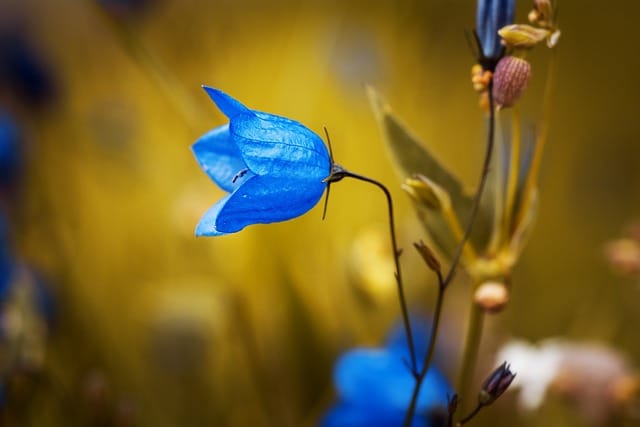How to grow Bellflowers
Bellflowers, also known as Campanula, are beautiful flowering plants that belong to the Campanulaceae family

In this article:
- Introduction to Bellflowers
- Choosing the Right Variety
- Selecting the Ideal Location
- Soil Preparation and Planting
- Watering and Fertilizing
- Mulching Techniques
- Sunlight and Shade Requirements
- Pruning and Deadheading
- Dealing with Pests and Diseases
- Propagation Methods
- Overwintering Bellflowers
- Companion Planting with Bellflowers
- Uses in Landscaping and Container Gardening
- Frequently Asked Questions
- Conclusion and Final Tips
Introduction to Bellflowers
Bellflowers, also known as Campanula, are beautiful flowering plants that belong to the Campanulaceae family. They are loved for their bell-shaped flowers that come in various colors like blue, pink, and white. Bellflowers can be annual, biennial, or perennial depending on the variety and are commonly used in gardens, borders, and as cut flowers.
Choosing the Right Variety
When choosing a bellflower variety, consider your climate, soil conditions, and the purpose of growing them. Some popular varieties include Campanula lactiflora, Campanula carpatica, and Campanula portenschlagiana. Each variety has unique characteristics, flower shape, and growth habit, so choose the one that suits your gardening needs.
Selecting the Ideal Location
Bellflowers thrive in full sun to partial shade. Select a location in your garden that receives at least 6 hours of direct sunlight each day. Make sure the area has well-draining soil and adequate air circulation to prevent diseases.
Soil Preparation and Planting
Prepare the soil by removing any weeds, rocks, or debris. Bellflowers prefer slightly acidic to neutral soil with a pH range of 6.0 to 7.5. Incorporate organic matter into the soil to improve drainage and fertility. Plant the bellflowers at the same depth as they were in their nursery containers, ensuring proper spacing between plants based on their mature size.
Watering and Fertilizing
Water the newly planted bellflowers thoroughly and keep the soil evenly moist until they establish roots. Once established, water them deeply but infrequently, allowing the top inch of soil to dry out between waterings. Fertilize the plants every 4-6 weeks during the growing season with a balanced fertilizer, following the manufacturer's instructions.
Mulching Techniques
Apply a layer of organic mulch around the base of the bellflower plants to help conserve moisture, suppress weed growth, and regulate soil temperature. Mulch also adds nutrients to the soil as it breaks down. Avoid mulching too close to the stems of the plants to prevent rotting.
Sunlight and Shade Requirements
Bellflowers require at least 6 hours of direct sunlight each day to thrive and flower abundantly. However, some varieties can tolerate partial shade. Take note of the specific light requirements for your chosen bellflower variety and provide the appropriate conditions accordingly.
Pruning and Deadheading
Regular pruning and deadheading will help promote continuous blooming and maintain the plant's shape. Trim back any spent flowers by cutting them just above the next set of leaves or new flower buds. Additionally, prune the plants in early spring by removing any dead or damaged stems.
Dealing with Pests and Diseases
While bellflowers are generally resistant to most pests and diseases, they can occasionally be affected by aphids, slugs, or powdery mildew. Keep an eye out for any signs of infestations or diseases and take appropriate measures, such as using organic insecticides or implementing proper cultural practices, to control and prevent further damage.
Propagation Methods
Bellflowers can be propagated through various methods, such as division, seed sowing, or stem cuttings. Division is the easiest method and should be done in early spring or fall. Seeds can be sown indoors in late winter and transplanted outside after the last frost. Stem cuttings can be taken from healthy plants in early summer and rooted in a well-draining growing medium.
Overwintering Bellflowers
Perennial bellflowers will naturally go dormant during winter. Cut back the stems to ground level in late fall or early winter. Applying a layer of mulch around the plant base can provide some insulation and protect the roots. In areas with extremely cold climates, consider covering the plants with a frost blanket for added protection.
Companion Planting with Bellflowers
Bellflowers make excellent companions in the garden. They can be planted alongside other perennials, annuals, or shrubs that have similar light and moisture requirements. Combining them with plants like roses, daylilies, or coneflowers creates a visually appealing and diverse landscape.
Uses in Landscaping and Container Gardening
Bellflowers are versatile plants that can be used in various landscape settings. They can be utilized in rock gardens, borders, cottage gardens, or as standalone focal points. Bellflowers also thrive in containers, making them ideal for balcony or patio gardens. Choose compact varieties for smaller pots and ensure proper drainage.
Frequently Asked Questions
Q: How often should I water my bellflowers?
A: Water deeply but infrequently, allowing the top inch of soil to dry out between waterings.
Q: Are bellflowers deer-resistant?
A: Yes, most bellflower varieties are deer-resistant.
Q: Can bellflowers be grown indoors?
A: While they are primarily outdoor plants, some compact varieties can be grown indoors if provided with sufficient sunlight.
Conclusion and Final Tips
Bellflowers are wonderful additions to any garden, offering a wide range of colors and forms. By selecting the right variety, providing the ideal location, proper care, and addressing common issues, you can grow healthy and vibrant bellflowers. Experiment with different combinations and arrangements to create stunning displays in your garden or containers.
Remember to always observe and adapt your gardening practices based on the specific needs of your bellflower variety. With patience and attention, you'll be rewarded with beautiful blooms that bring joy and beauty to your outdoor space.
